To generate at least as much energy as it uses, a building may need more photovoltaic panels than its roof can accommodate. One solution is to extend the roof, as Seattle’s Miller Hull Partnership did when it designed that city’s Bullitt Center, a six-story building with a PV panel-laden trellis cantilevering beyond its exterior walls.
Miller Hull has repeated the strategy in Atlanta, where it and Lord Aeck Sargent, a Katerra company, have just completed the Kendeda Building for Innovative Sustainable Design at Georgia Tech. The new, 37,000-square-foot, three-story building has a large steel and aluminum trellis that reaches beyond the roof in three directions with the help of thin, cable-tensioned steel columns. About 40 feet off the ground, the trellis shelters gardens that serve as gathering places for students. The main shaded area resembles a kind of front porch, a play on the southern vernacular, says Brian Court, partner at Miller Hull and that firm’s design lead for the building. The porch opens into an atrium surrounded on three levels by classrooms, laboratories, and mechanical spaces. A lower, brick-clad extension houses a 175-seat lecture hall. The facilities are “not just for those students interested in sustainability as a career,” says Michael Gamble, director of graduate studies in the School of Architecture. Instead, Georgia Tech students from a range of departments will have “access to a building that actually teaches us something.”
The lesson is that it’s possible to build a “regenerative” building even in the hot, humid southeast. That was a goal of the Kendeda Fund (created by philanthropist Diana Latow Blank, the former wife of Home Depot co-founder Arthur Blank). Kendeda paid for the $18.6 million building and provided millions more for programming.
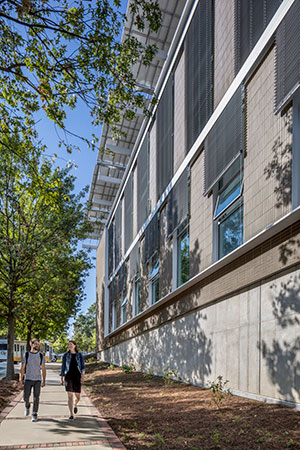
While the building is expected to receive a LEED Platinum rating, it was designed to meet the more stringent standards of the Living Building Challenge. To be certified, a building must produce more water and more electricity than it consumes. Net-positive water will be achieved by collecting an estimated 460,000 gallons of rainwater each year (runoff from the PVs is collected in channels and fed into a cistern and filtered to potable standards). As for electricity, the building’s 900 photovoltaic panels are expected to generate 455,000 kilowatt hours annually, 40 percent more than it is projected to use. To make the building energy-efficient, its designers focused on occupant comfort rather than fixed temperature goals and made extensive use of ceiling fans, radiant heating and cooling, and a dedicated outdoor air system (DOAS), combined with a super-efficient envelope. The building met other Living Building Challenge standards; for example, products were eliminated or reformulated to avoid chemicals on the program’s “red list.”
The building will not receive its final certification until it has demonstrated that it is energy- and water-positive for a year, notes Chris Hellstern, Living Building Challenge Services Director at Miller Hull. To achieve that, says Joshua Gassman, Lord Aeck Sargent’s sustainable design director, “Everything has to work together—it’s almost like building a Swiss watch.”
Not only will Kendeda be operationally efficient, Hellstern says, but it was designed to reduce embodied energy—the energy consumed in fabrication and construction—as well. Among other strategies, sustainably harvested wood was used for the main structural elements, reclaimed wood was used for decking, and 100-percent-recycled-content brick was incorporated into the cladding. “We used excess chunks of decking to build internal stairs, both to avoid creating landfill and to show that something that would have been wasted can contribute to both the beauty and the function of the project,” Gassman says. Speaking for the entire industry, Hellstern points out, “Unless we address embodied energy, we won’t meet climate targets.”
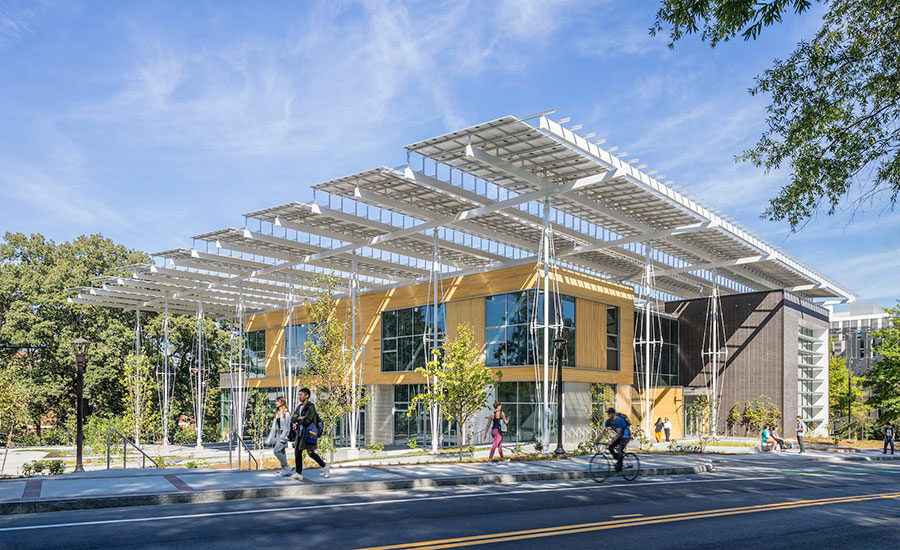
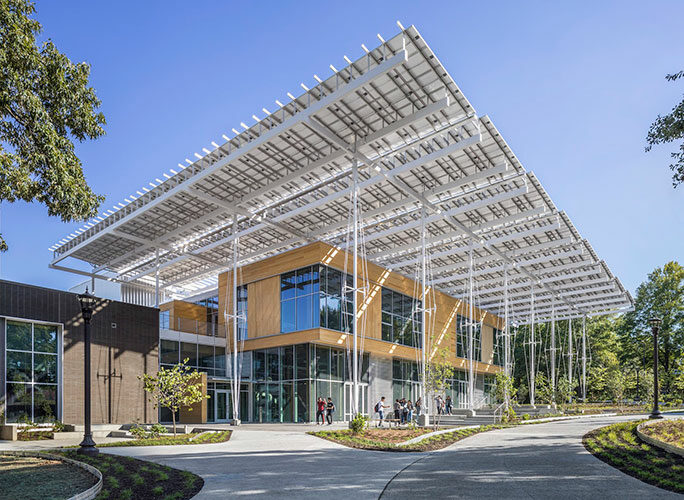
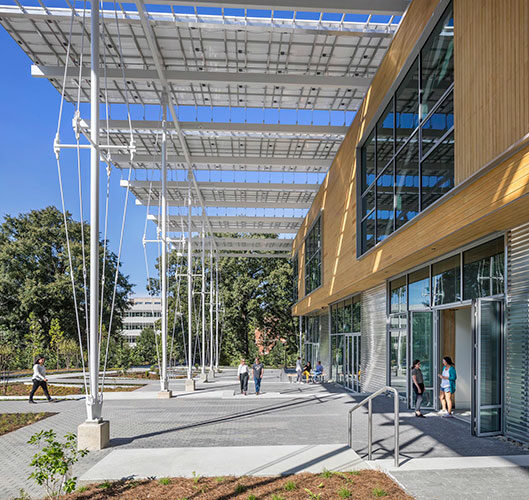
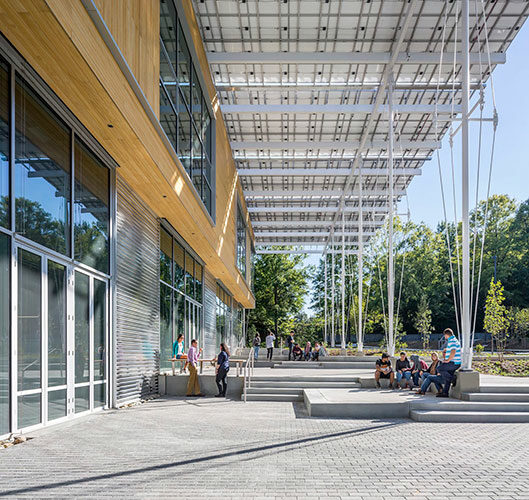
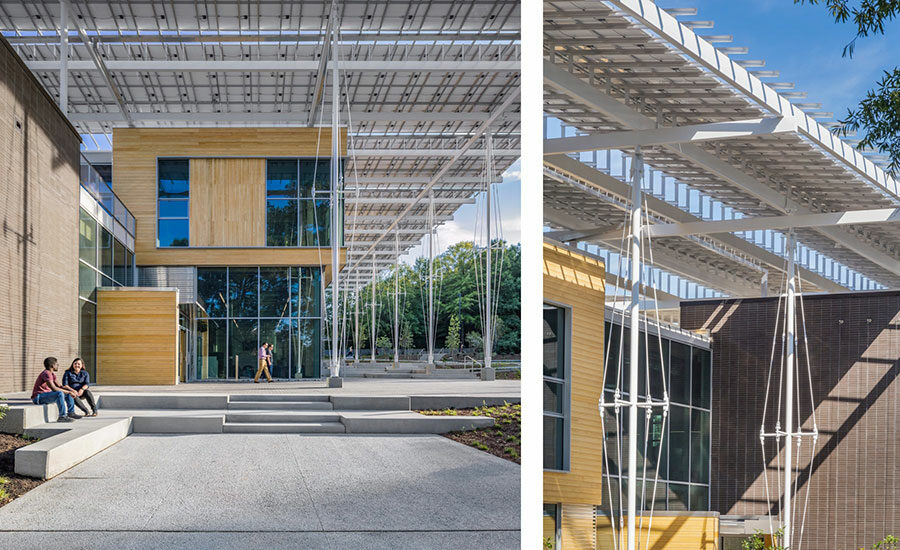
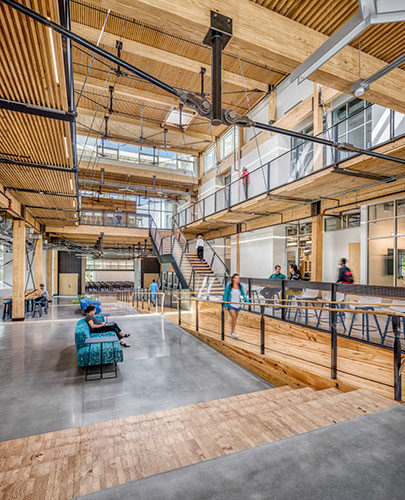
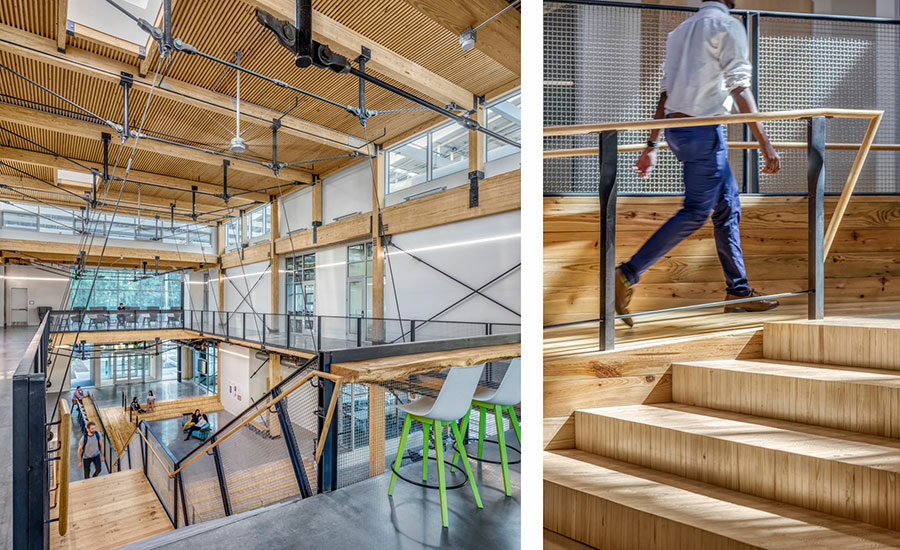
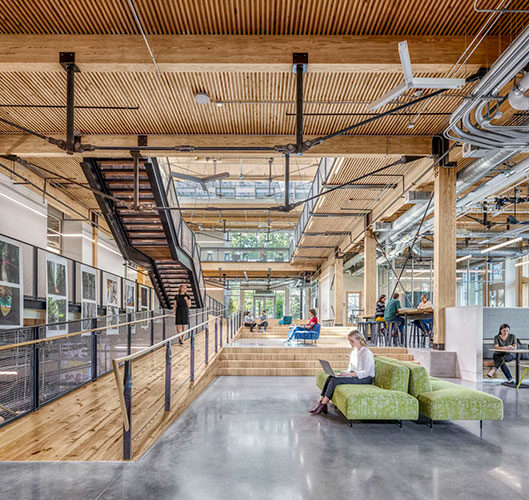

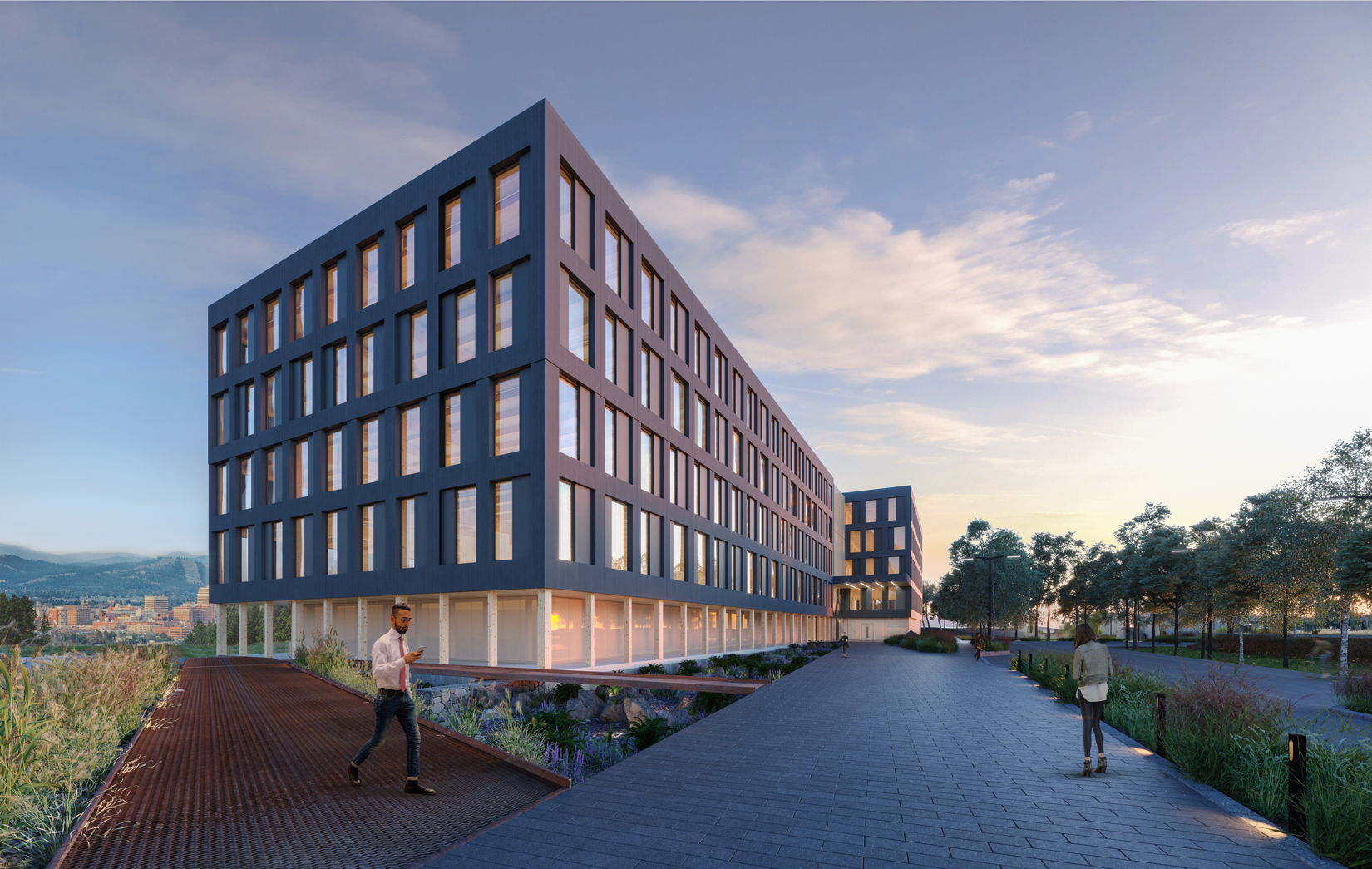
Post a comment to this article
Report Abusive Comment